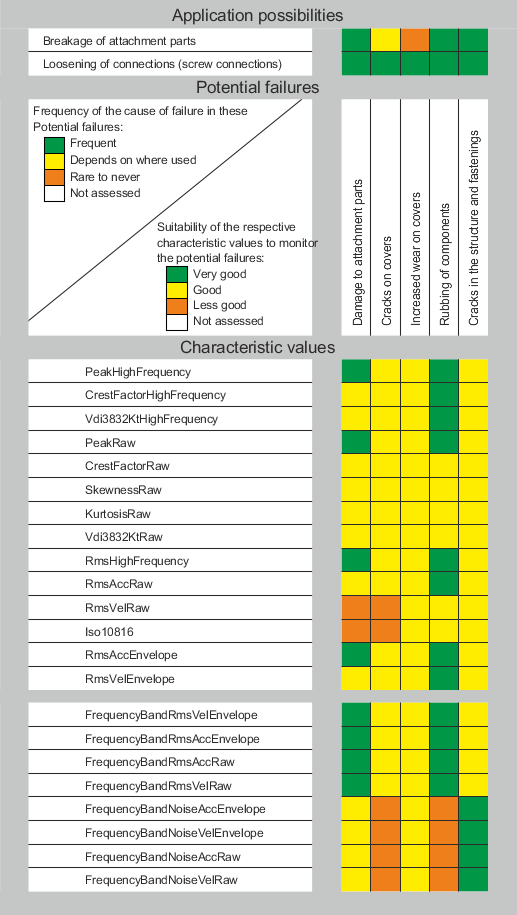If individual parts in the machine are loose, they can cause unwanted oscillations. When individual parts strike housings or attachment parts, these appear very similar. As a result, the two causes of damage cannot be analyzed separately.
In addition, components strike their counterparts on each revolution. This in turn causes the attachment parts to vibrate at their natural frequency. Envelope analysis can be used to separate the causes of impact.
如果机器中的个别零件松动,可能会导致不必要的振动。当单个零件撞击外壳或连接件时,这些看起来非常相似。因此,无法分别分析造成损坏的各自原因。
此外,部件在每次旋转时都会撞击其对应部件。这反过来又导致连接部件以其固有频率振动。包络分析可以用来分离撞击的原因。
Failure mode 故障类型 |
Frequency in raw signal spectrum 原始信号频谱中的频率 |
Frequency in envelope spectrum 包络谱中的频率 |
Comment 解释 |
|---|---|---|---|
Loose parts, parts striking each other 零件松动,零件相互碰撞 |
(1 x fn) |
1 x fn |
There is usually one strike per revolution. If an envelope occurs for the load, a double frequency can be determined. 通常每转有一次冲击。如果负载发生包络,可以确定其双倍频率。 |
fn |
... Nominal speed ... 标称速度 |

Fig.: Causes of errors and symptoms of loose or striking parts
图: 零件松动或撞击的故障原因和状态
关于各个特征值的含义,见 Characteristic values 和 Configuration。